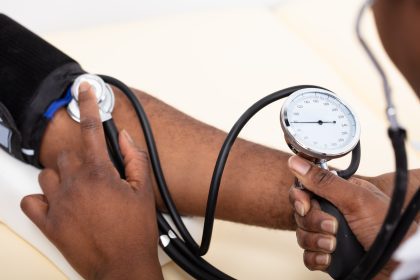High blood pressure remains one of the leading causes of stroke, yet many Americans don’t realize they have it. This common condition, often called hypertension, silently damages blood vessels until serious complications arise. Understanding its connection to stroke risk and taking action to manage it could save your life.
The silent danger of elevated blood pressure
When blood pressure rises above normal levels (120/80 mm Hg), it begins damaging arterial walls. This damage can lead to blockages or ruptures in brain blood vessels, potentially causing a stroke. Despite its severity, high blood pressure often produces no noticeable symptoms until significant damage has occurred.
Each increase in blood pressure compounds the risk. Research shows that individuals with readings above 130/80 mm Hg face twice the stroke risk compared to those with normal readings. This risk continues to climb with each point increase.
Essential strategies for blood pressure control
Diet modifications that make a difference
The DASH diet, specifically designed for blood pressure management, emphasizes fruits, vegetables, and whole grains while limiting sodium. Key guidelines include:
- Reducing daily sodium intake to 2,300 milligrams or less
- Including potassium-rich foods like bananas and sweet potatoes
- Choosing lean proteins and low-fat dairy products
- Incorporating heart-healthy fats from sources like olive oil and avocados
- Limiting processed foods and added sugars
Physical activity’s crucial role
Regular exercise strengthens the heart, improving its efficiency and reducing arterial pressure. Health experts recommend:
- 150 minutes of moderate activity weekly
- Incorporation of both cardio and strength training
- Starting slowly and building intensity gradually
- Consistency over intensity for long-term benefits
Stress management techniques
Chronic stress contributes to blood pressure elevation through various mechanisms. Effective management strategies include:
- Regular meditation or deep breathing exercises
- Adequate sleep (7-9 hours nightly)
- Time management to reduce daily pressures
- Regular breaks during work hours
- Engagement in enjoyable activities
The importance of medical monitoring
Regular blood pressure checks provide vital information about cardiovascular health. Healthcare providers recommend:
- Monthly checks for those with normal readings
- Weekly monitoring for those with elevated numbers
- Keeping a log of readings to track patterns
- Immediate medical attention for readings above 180/120
Understanding your numbers helps guide treatment decisions. Normal blood pressure falls below 120/80 mm Hg, while readings above this level indicate increasing risk:
- 120-129/80: Elevated
- 130-139/80-89: Stage 1 hypertension
- 140+/90+: Stage 2 hypertension
- 180+/120+: Hypertensive crisis
Lifestyle factors that impact blood pressure
Weight management
Extra weight forces the heart to work harder. Even modest weight loss can significantly reduce blood pressure:
- Aim for 5-10% reduction in body weight if overweight
- Focus on sustainable dietary changes
- Combine diet modifications with regular exercise
- Track progress through measurements beyond scale weight
Substance use considerations
Both alcohol and tobacco affect blood pressure control:
- Limit alcohol to one drink daily for women, two for men
- Quit smoking to improve overall cardiovascular health
- Avoid secondhand smoke exposure
- Seek support for cessation efforts
Building a support system
Success in blood pressure management often requires a strong support network:
- Regular communication with healthcare providers
- Family involvement in lifestyle changes
- Connection with support groups or online communities
- Access to reliable health information sources
Long-term benefits of control
Maintaining healthy blood pressure levels provides benefits beyond stroke prevention:
- Reduced risk of heart disease
- Better cognitive function
- Improved kidney health
- Enhanced overall quality of life
- Greater independence in later years
Understanding the connection between blood pressure and stroke risk empowers individuals to take control of their health. Through consistent monitoring, lifestyle modifications, and appropriate medical care, maintaining healthy blood pressure becomes an achievable goal. This investment in cardiovascular health pays dividends in both quality and quantity of life.
The path to stroke prevention through blood pressure control requires commitment but offers substantial rewards. By taking action today, you invest in a healthier, more vibrant future free from the devastating effects of stroke.
This story was created using AI technology.

















